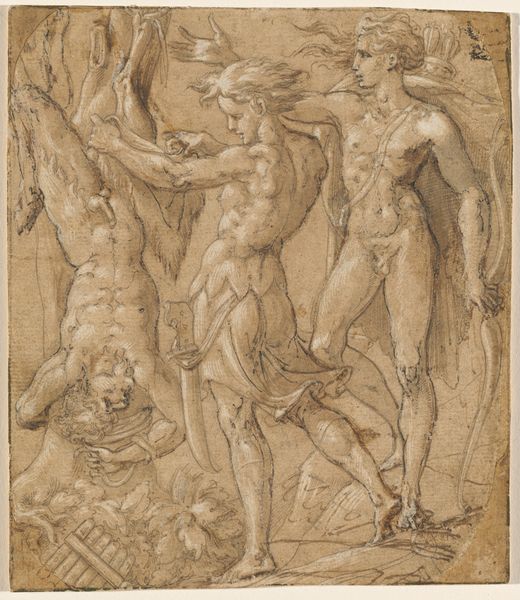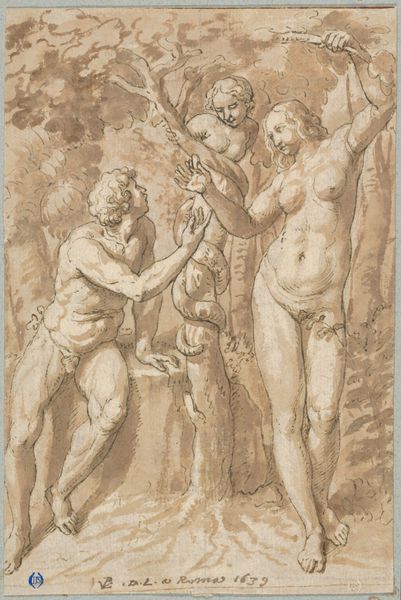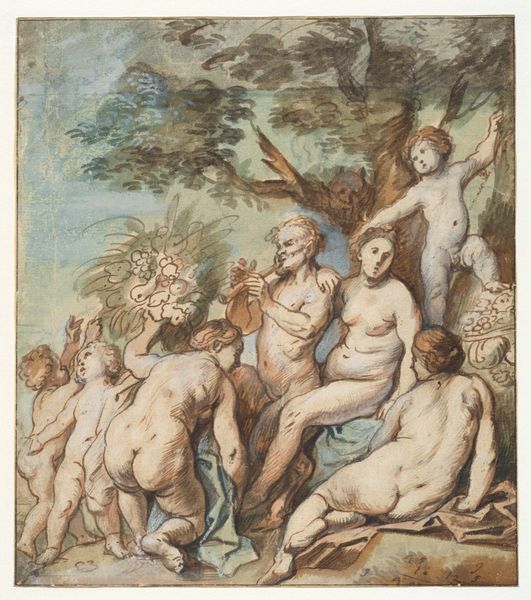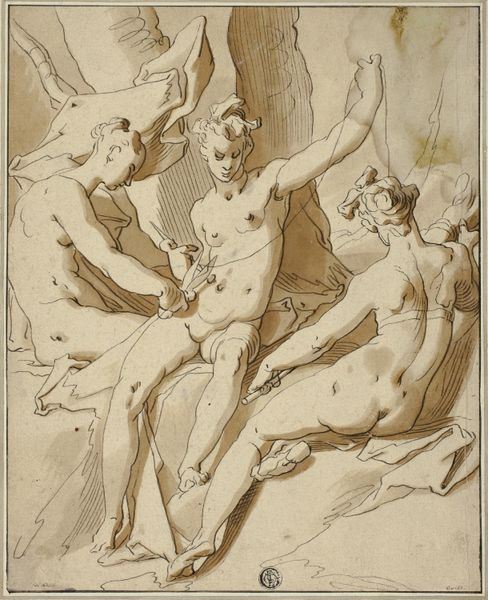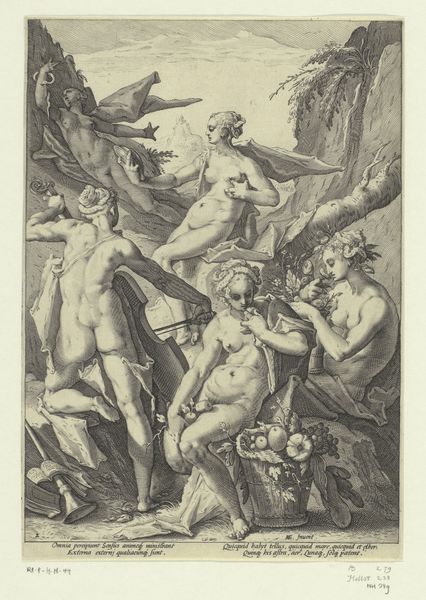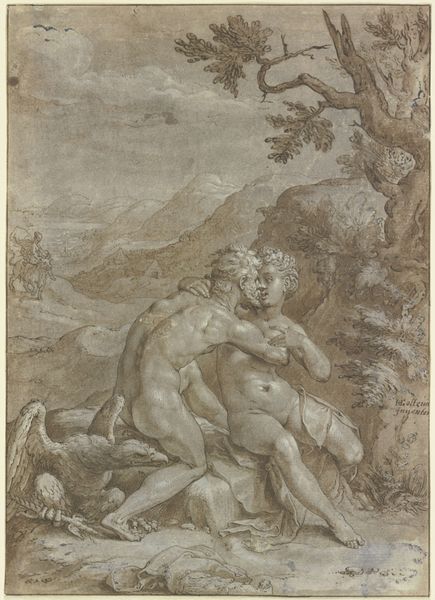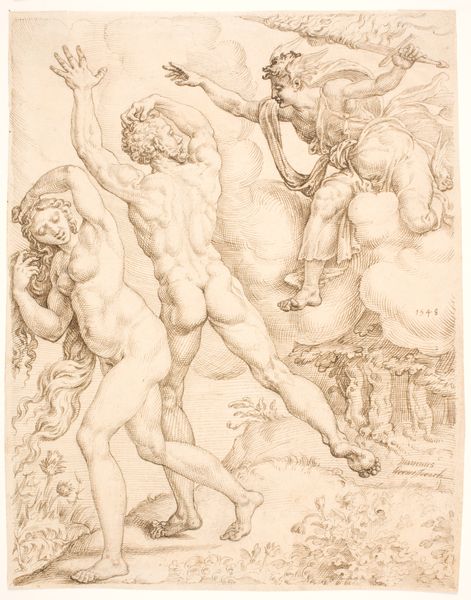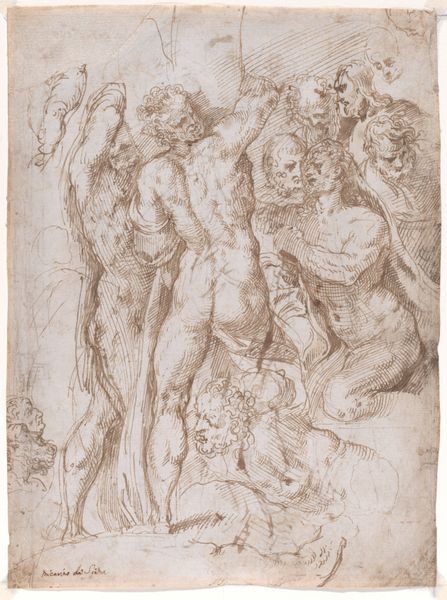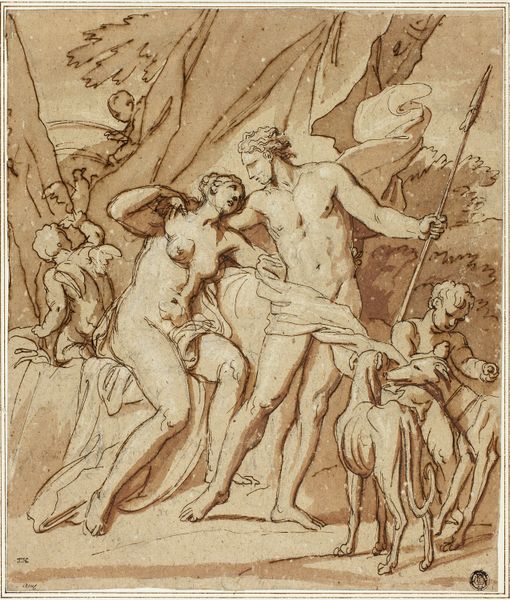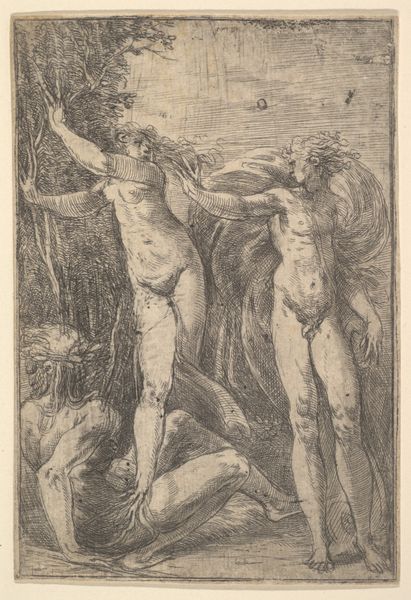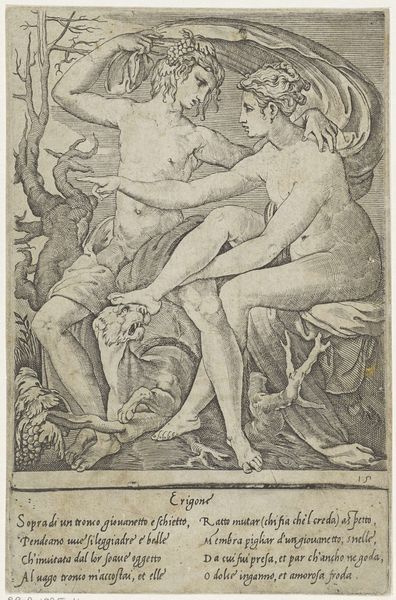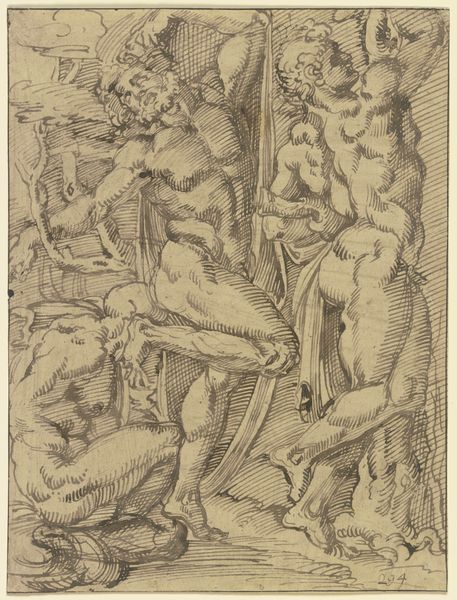
drawing, print, paper, ink, chalk, pen, charcoal
#
drawing
#
allegory
#
narrative-art
#
baroque
# print
#
charcoal drawing
#
figuration
#
paper
#
ink
#
chalk
#
pen
#
charcoal
#
history-painting
#
academic-art
Dimensions: 279 × 210 mm
Copyright: Public Domain
Curator: This drawing, currently residing at the Art Institute of Chicago, is titled *Crowning of Hercules*. It is an ink, chalk, charcoal, and pen drawing by Paolo De Matteis, although the precise date of its creation remains unknown. Editor: It's immediately striking—almost like a dream sequence. The sepia tones lend a sense of antiquity, and the figures seem to float within the space. The bold figure on the left immediately pulls the viewer in, slumped and yet powerful in stature. Curator: Indeed, De Matteis masterfully employs Baroque drama in this depiction. Hercules is portrayed, but in a moment of relative repose rather than active labor, as is typically shown in depictions of him. Editor: Right, which speaks to the cyclical nature of stories! Hercules is a figure that contains the strength, violence, triumph, and the *memory* of the Classical world within him. This drawing taps into those archetypes and then adds the weight of exhaustion and pensiveness. The victor reflects, as he should. Curator: Precisely. This choice of depiction challenges the classical ideals of heroism popular during the Renaissance and Early Baroque periods. By displaying a Hercules vulnerable, perhaps tired of constant displays of power, De Matteis is engaging with deeper aspects of this hero's narrative—even revealing inner psychological terrain that the stories sometimes gloss over in favor of a relentless external journey. We also must remember that crowning ceremonies are political acts as much as they are devotional; what are the political ramifications of crowning Hercules? Editor: That adds a completely fresh layer. It moves it from a moment of quiet, internal reflection to a politically charged one. It makes you wonder who these characters around him are. Do they see this man worthy of political rule or of something more godly and beyond their scope of power? The man presenting the crown seems benevolent but who does he represent? And the figure above who is projecting a loud noise... Who are they announcing the crown to? It certainly leaves me with a lot of unanswered questions. Curator: Which might very well be the intention of the artist: to trigger contemplation more than provide answers, echoing in viewers the introspective mode Hercules himself inhabits here. Editor: A vulnerable, yet heroic and iconic figure that perhaps, unknowingly to us, challenges contemporary societal views of leadership. It certainly has that emotional weight, to this day. Thank you for your insights.
Comments
No comments
Be the first to comment and join the conversation on the ultimate creative platform.
